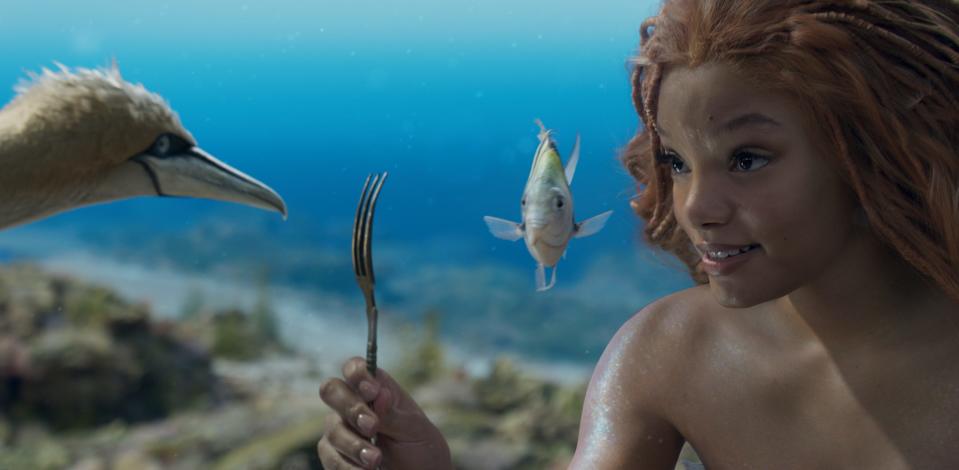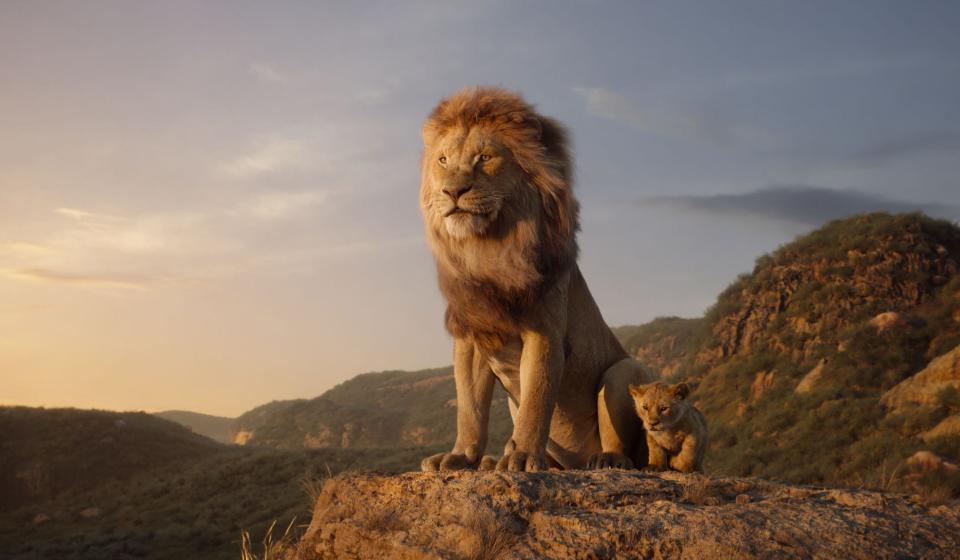'The Little Mermaid': Why live-action Disney remakes never live up to the animated movies
In the 1989 version of "The Little Mermaid," the sea was a crisp blue, sea creatures could turn into functional musical instruments, ocean waves defied gravity and a flounder was huggable.
But under the sea in the 2023 remake, the ocean is dank and dark, the fish are slimy, scary and bug-eyed and the only thing defying science is Melissa McCarthy's eyeshadow, which stays immaculate underwater.
Much has already been said about the new "Mermaid," which stars McCarthy as the villain Ursula and singer Halle Bailey as Ariel, and how it disappoints compared to its animated original. It's a tale as old as time when it comes to Disney's parade of live-action remakes of its beloved animated films (their box-office take, however, seems just fine). Their biggest problem is simple: They were better off staying cartoons.

Every change ? to aesthetics, to story, to soundtracks, to length ? that is required to make these films "live action" chips away at the magic of the originals. This relentless pursuit of realism doesn't make a good kids' movie: It may be dark underwater in the real ocean, but we want to see Ariel dance properly lit on the screen. The new films are too long, too monotone, too bland and full of photorealistic talking animals that range from boring to horrifying.
Photorealistic fish? Not what you'd call cuddly
Looking at the animals, it is easy to see how the new films have gone wrong. Take the seafaring sidekicks of "Mermaid," which are full of color, dynamism and emotion in the original film. Their eyes are exaggerated, their proportions are all wrong for nature but follow cute character rules (namely, imitating the dimensions of a human baby). They are inviting and, well, animated. They make great stuffed animals to sell at the Disney Store.

In the 2023 "Mermaid," Flounder (voiced by Jacob Tremblay) is beige. He looks like a real flounder, which means he's skinny and a little creepy. Sebastian (Daveed Diggs) looks like any other spindly crab, except that his mouth moves. Scuttle the seagull (Awkwafina) has terrifying eyes. When the three try to sing and dance (and Scuttle very unfortunately raps), they are limited in their movements. They kind of wiggle and flop. It's depressing and unsettling to watch.
The new "Mermaid" tries and fails to grab some of the flash of the original. It has fish that swim around Ariel in pretty patterns during showstopper "Under the Sea." But in the cartoon, the fish do a conga line. Animated fish bunny-hopping is a joy to watch ? photorealistic fish doing it is a horror show. Animals have an uncanny valley, and Disney found it.
In the production of many animated movies, voice actors are filmed as they record their dialogue. Then the animators can incorporate their performances into the faces of their characters. It's why Robin Williams' Genie from "Aladdin" is so magnetic, and why Simba in "The Lion King" can break your heart. But when the goal is a "real" animal, you can't put human emotions behind their eyes.
There's nothing magical about a fantasy world that looks like a real one
It's not just the animals. It's the whole futile exercise of realism in live-action remakes that in actuality are primarily CGI. There is an inherently magical quality to animation as an art form. It's not just the most convenient way to bring a mermaid to life or the dumbed-down version of movies for kids. It's a thing all its own that opens up worlds, exaggerates and emphasizes and literally illustrates exactly what the artist wants us to see.
Ariel's hair is redder than red. Sebastian's eyes are bigger than big. The ballgowns are poofy and perfect. It's no wonder animation is a medium primarily associated with children; these exaggerations are candy to their little curious minds. A great animated movie is bright, brilliant and brimming with possibility. It has dynamism. Every comparable image from a live-action remake is flat and dull.

There is another way to bring these stories to live action that preserves their inherent campiness and charm. "The Lion King," "Beauty and the Beast," "Aladdin" and others have moved from animation to Broadway with far more creative success than they do to feature film. Glitter, big hair and big makeup is a part of the fabric of the stage, and when you turn an animated lion into a breathtaking puppet, you have something new and exciting to look at. Onstage, the living objects of "Beast" bedazzle with their sheer absurdity, with kick lines full of dancers dressed as forks and knives. The Disney stage adaptations are fun, where the movie remakes are a slog.
With every Disney cartoon seemingly getting a remake (including 2016's "Moana"), audiences are doomed to singing nature documentaries for years to come. But when it comes to cultural legacy, they can't get anywhere close to their predecessors. Magic doesn't strike twice.
Read more about the new 'Little Mermaid':
What's the same, what's different? Disney's 'The Little Mermaid' remake
The new 'Little Mermaid': Halle Bailey had to push herself 'past what I thought I could ever do'
Prince Eric is the best Disney prince. Here's why we love the underrated 'Little Mermaid' hero.
Melissa McCarthy: The actress reveals the 'Little Mermaid' switch that 'changed the game' for Ursula
Review: Halle Bailey keeps Disney's live-action 'Little Mermaid' remake from being all wet
This article originally appeared on USA TODAY: Why live-action Disney movies like 'The Little Mermaid' fall short
